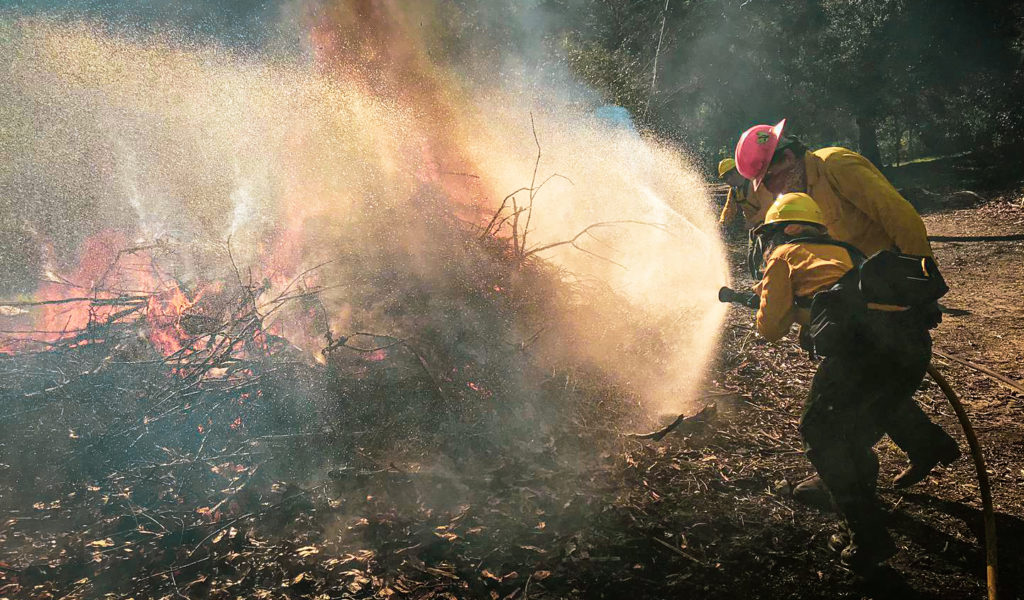Standing a few feet back from a wall of 9- foot flames I felt the tip of my nose smart. When the lick of fire began to shift from uncomfortable to unbearable I opened the nozzle of my hose releasing a wide spray of water, what firefighters call ‘fog’, and instantly felt the air cool between me and the the burn pile. There’s no better way to equip oneself with fire fighting and fire behavior than hands on practice.
Since Wildland Fire training was held at a Buddhist monastery, the lexicon of fire ‘fighting’ was localized. The firefighters from Tassajara Zen Mountain Center’s Fire Academy are respected Fire Monks and they don’t fight fire, they meet fire. The previous summer, half of my Conservancy colleagues had taken the Wildland Firefighter Training Type II course. Last spring, it was Christy Fischer, Jenna Allred and my turn to learn about wildland fire fighting alongside Tassajara residents and members of the Ama Musen tribe who conduct prescribed burns on their ancestral lands in Santa Cruz. In one week three career wildland firefighter instructors – Eric Moore, Steve Davis and Rob Thomas – taught us the basics of wildland fire fighting including the hazards and hazardous behavior to know to stay safe around fire. We also learned about the effectiveness of our personal protective equipment, how to cut fire lines using a variety of tools, how to safely position ourselves from the heat and flames, and how to deploy tools, like lines of hoses, to prepare for fighting fire.
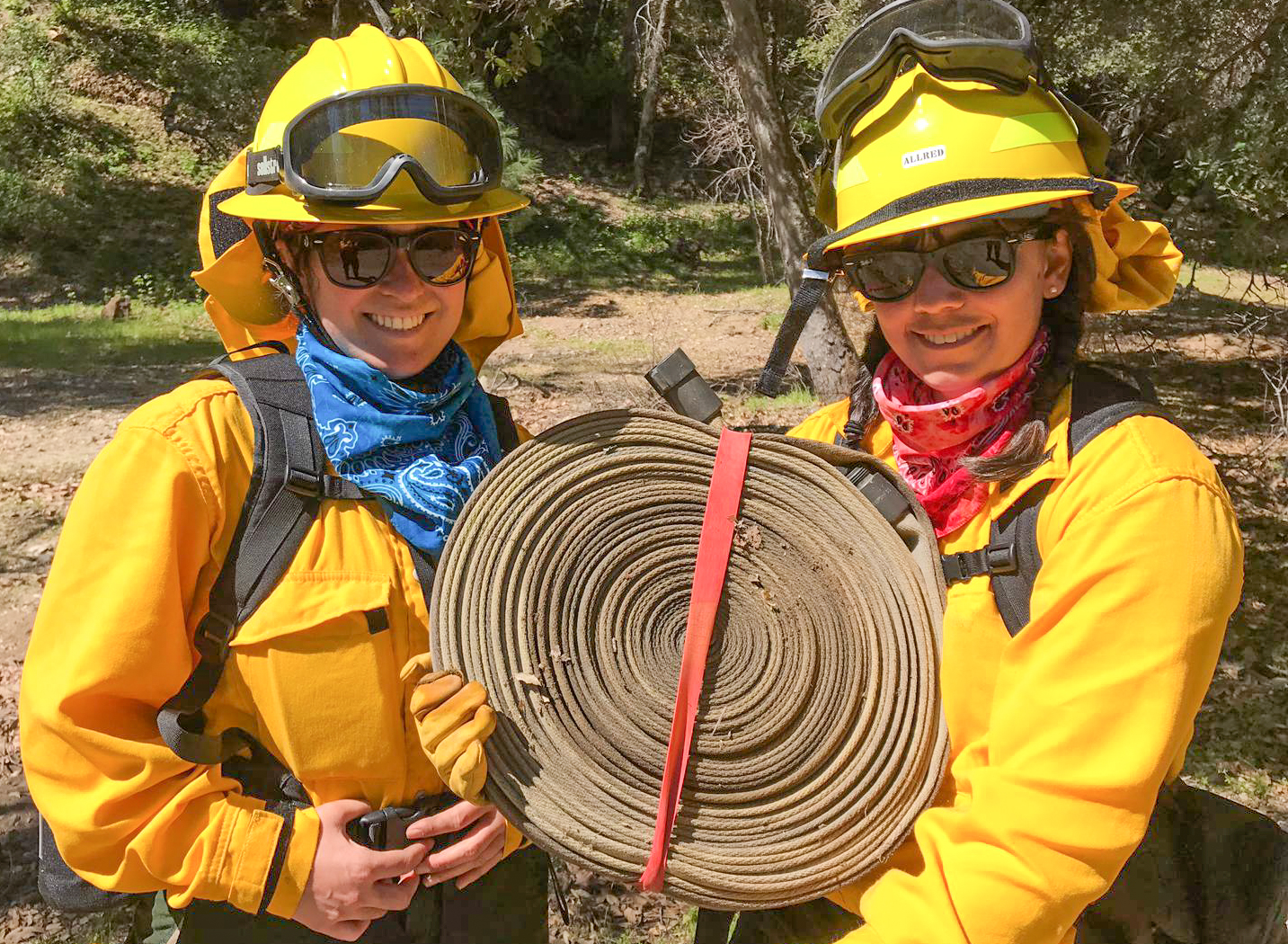 The week at Tassajara was immersive, informative, restorative and humbling. Building the Conservancy’s capacity to meet fire is important for land management. Our Director of Conservation Science, Dr. Christy Wyckoff, has been advocating to bring intentional fire, known as prescribed burning, back to The Preserve. Prescribed burns reduce fuels, including invasive weeds and help with habitat restoration. In fact, many native plants germinate with the help of a flame’s heat or smoke. In recent years the conditions haven’t been quite right for prescribed burns due to a combination of factors including limited fire fighting resources and stringent weather requirements. We are hopeful that the Conservancy’s certified team members can suit up in our flame-resistant nomex suits soon though.
The week at Tassajara was immersive, informative, restorative and humbling. Building the Conservancy’s capacity to meet fire is important for land management. Our Director of Conservation Science, Dr. Christy Wyckoff, has been advocating to bring intentional fire, known as prescribed burning, back to The Preserve. Prescribed burns reduce fuels, including invasive weeds and help with habitat restoration. In fact, many native plants germinate with the help of a flame’s heat or smoke. In recent years the conditions haven’t been quite right for prescribed burns due to a combination of factors including limited fire fighting resources and stringent weather requirements. We are hopeful that the Conservancy’s certified team members can suit up in our flame-resistant nomex suits soon though.
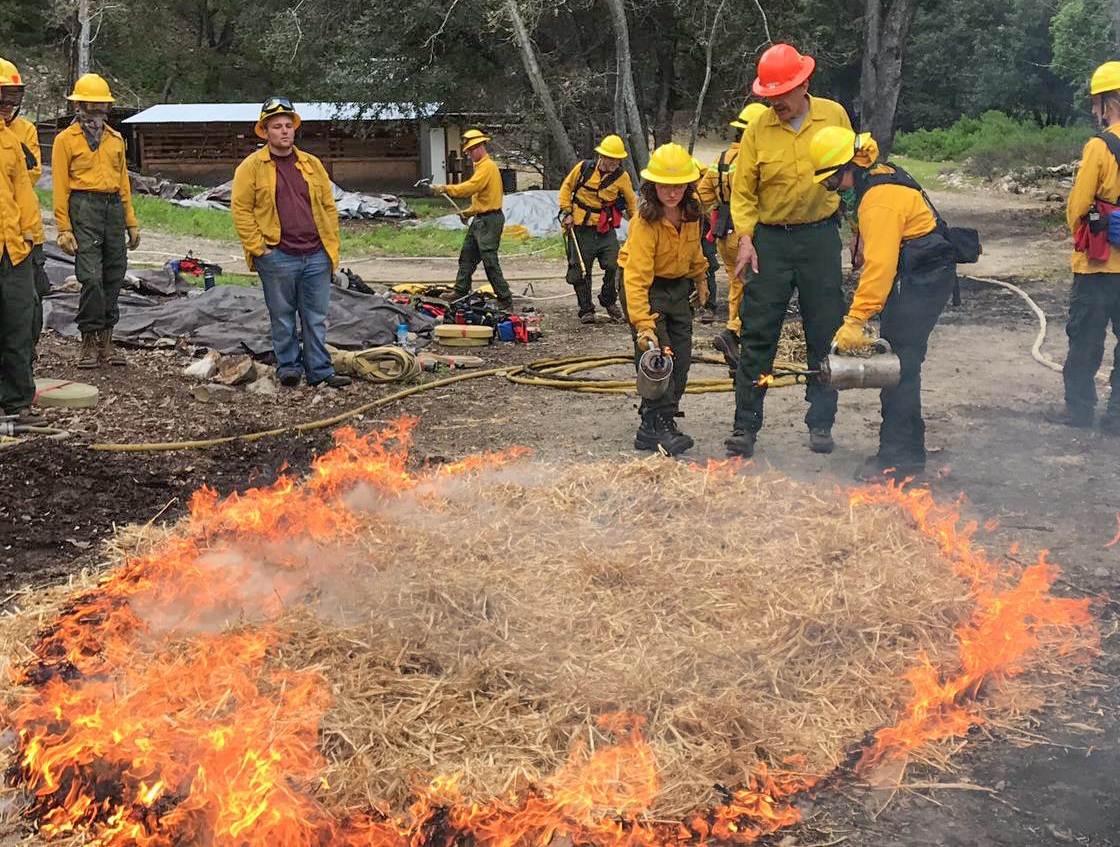 Our firefighting skills are just one aspect of the Conservancy’s approach to fire safety. We have long been engaged in fire prevention and prescribed fire on The Preserve, but since the Soberanes fire in 2016 the Conservancy, in partnership with The Preserve, has become an an integral part of regional fire planning and community preparation. Dr. Christy serves on the steering committee for the Monterey Resource Conservation District’s Fire Fuels Management Program which is working towards more collaborative and comprehensive fire preparation including GIS data and grant funded projects. Our work with Cal Fire on local fuel management projects has branched out to exciting collaborations on fire preparation with Big Sur Land Trust, US Forest Service, Monterey Peninsula Regional Park District and State Parks. Each of these partnerships has strengthened both regional preparation and protection here on The Preserve, but it has also ensured that The Preserve is recognized as an important community, resource and landscape in the larger wildfire conversation.
Our firefighting skills are just one aspect of the Conservancy’s approach to fire safety. We have long been engaged in fire prevention and prescribed fire on The Preserve, but since the Soberanes fire in 2016 the Conservancy, in partnership with The Preserve, has become an an integral part of regional fire planning and community preparation. Dr. Christy serves on the steering committee for the Monterey Resource Conservation District’s Fire Fuels Management Program which is working towards more collaborative and comprehensive fire preparation including GIS data and grant funded projects. Our work with Cal Fire on local fuel management projects has branched out to exciting collaborations on fire preparation with Big Sur Land Trust, US Forest Service, Monterey Peninsula Regional Park District and State Parks. Each of these partnerships has strengthened both regional preparation and protection here on The Preserve, but it has also ensured that The Preserve is recognized as an important community, resource and landscape in the larger wildfire conversation.
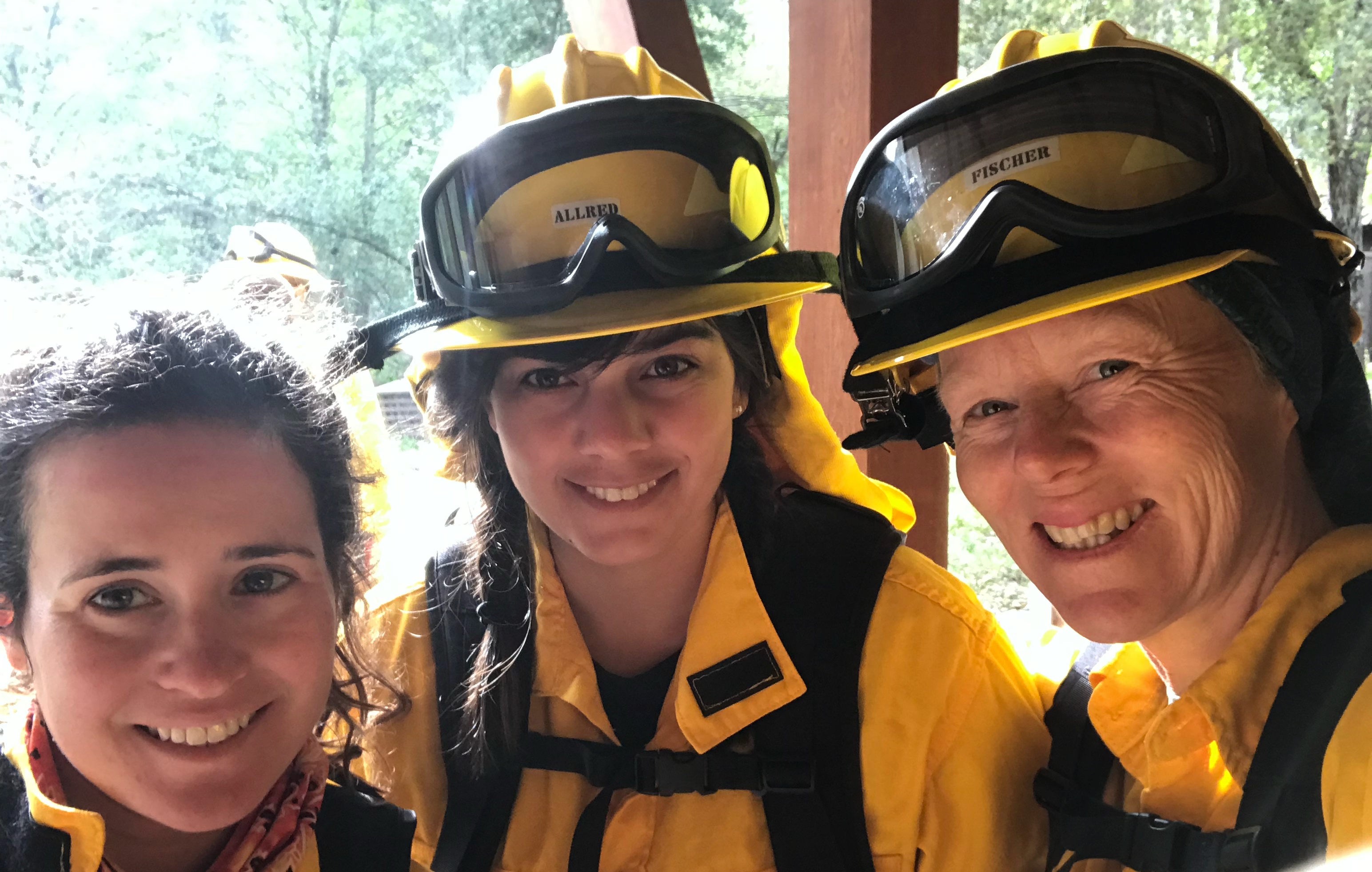 Creating a fire safe community is a team effort. The Conservancy’s work with the regional fire community is enhanced by the engagement and thoughtful infrastructure of The Preserve community. Every residence that regularly implements their fuel management plan plays an important role in keeping the community fire-safe by creating defensible space in our landscape and reducing highly flammable invasive plants. Alongside residents, the Community Service District maintains extensive hydrant infrastructure and conducts Preserve- wide roadside fuel management. While Resident Services fuel management reminders and support play a pivotal role in our community’s fire safety.
Creating a fire safe community is a team effort. The Conservancy’s work with the regional fire community is enhanced by the engagement and thoughtful infrastructure of The Preserve community. Every residence that regularly implements their fuel management plan plays an important role in keeping the community fire-safe by creating defensible space in our landscape and reducing highly flammable invasive plants. Alongside residents, the Community Service District maintains extensive hydrant infrastructure and conducts Preserve- wide roadside fuel management. While Resident Services fuel management reminders and support play a pivotal role in our community’s fire safety.
Reflecting on my role within this effort – through live-fire training, I have gained a healthy respect for fire and consulting with contractors has bolstered my confidence in interpreting The Preserve’s Fuel Management prescriptions from paper to practice. I’m inspired as The Preserve continues to evolve into a fire smart community – perhaps one that other neighborhoods will look to for guidance in the future. Heading to a Preserve member’s home to go over their fuel management plan, I gaze across the valley. My eye lands on our historic fire tower at Peñon Peak, overlooking it all, and reminding us that fire has always been, and will always be, a natural part of our incredible landscape.
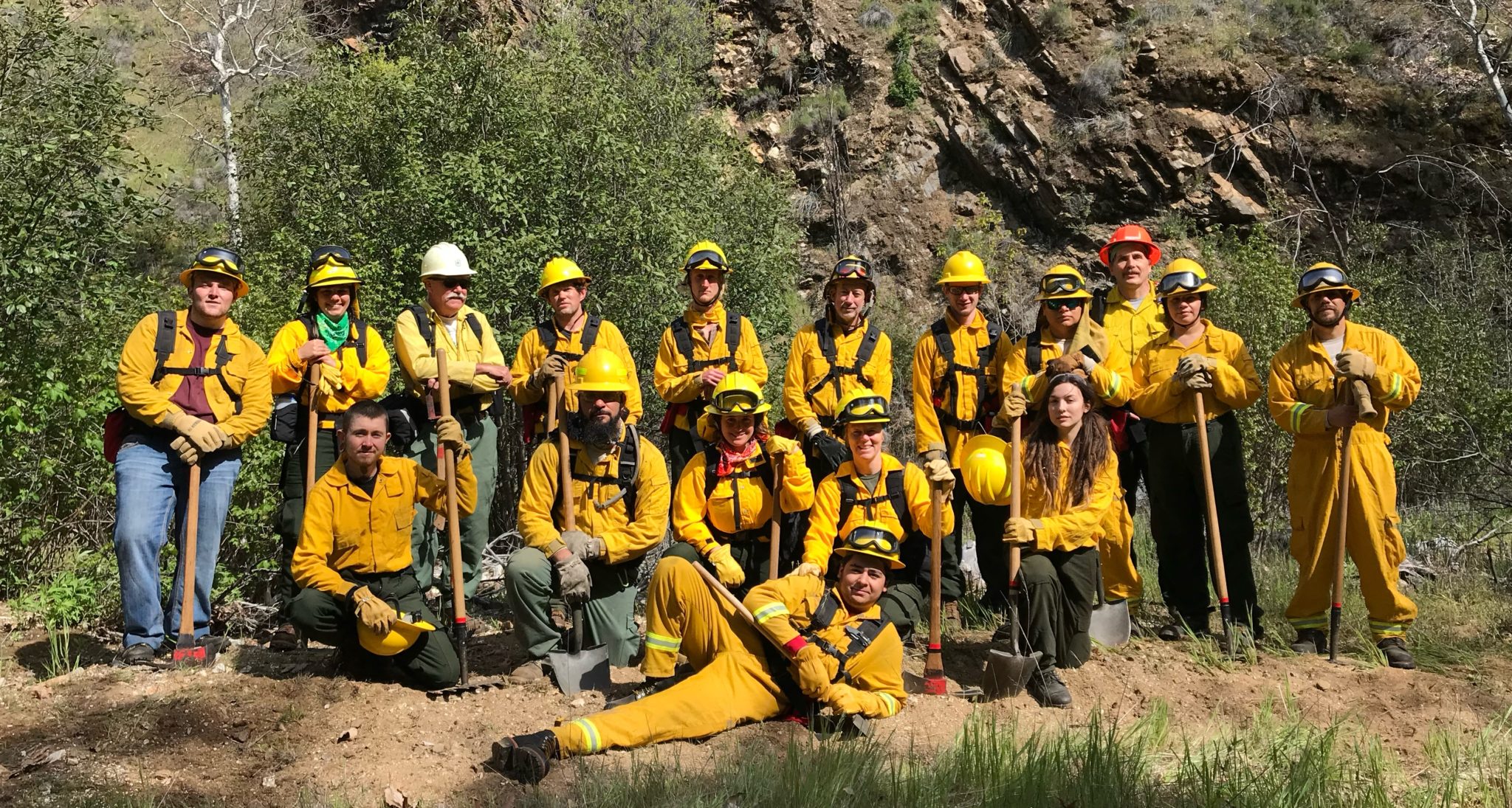 By Lindsay Cope
By Lindsay Cope
